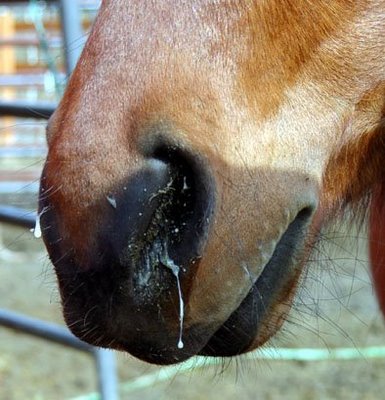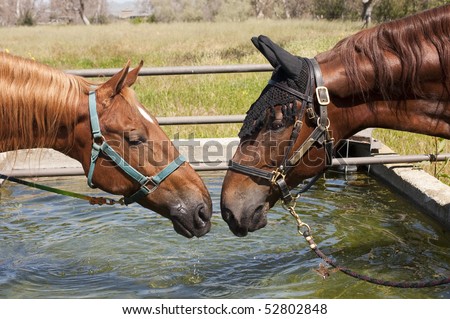Hey everybody!
I’m happy to see you decided to make another pit-stop at my
blog! Last week, I told you about a
great website for news in the rodeo
industry. This week, I will be covering a more somber topic that has been
grabbing attention the rodeo scene. The recent cases of EHV-1 have put many horse
owners, especially in the Midwest, on edge.
What is EHV-1?
Dr. Thomas R. Lenze states EHV-1, equine herpesvirus type 1,
causes “respiratory disease, abortion
in mares, neonatal foal death and/or neurologic disease” (Lenz, 2011). Approximately 80% of horses carry the disease in their
lymph nodes but never show any symptoms. When a carrier horse is stressed by
trailering, extensive training, etc., they can potentially 'shed' the virus. The
most common form of EHV-1 is the respiratory infection. Horses infected have a
fever, depression, nasal discharge, and loss of appetite. In the rarer,
deadlier, neurologic form of EHV-1 horses are weak, lethargic, have urinary
incontinence, decreased tail tone, and are unable to stand (Lenz, 2011).
Who is at risk?
Young horses are especially susceptible to the respiratory
form of EHV-1. Older horses and horses that under a lot of stress are more at
risk for the neurological form. If your horse is frequently being trailered,
experiencing extensive training, or attending shows/rodeos they might be a
higher risk as well (Lenz, 2011).
Current Cases
Outbreaks of EHV-1 have occurred multiple times in the past. Unfortunately, the disease has decided to break out again in 2014. The outbreak began in Minnesota and Wisconsin but has now spread to locations all across the country including Colorado and Iowa (“EHV-1Outbreaks Across United States,” 2014). Many of the infected horses have recovered but some have had to be euthanized.
What can I do to
reduce my risk?
Because of carrier horses that don’t show clinical signs,
containing this virus is extremely difficult. That is why outbreaks of EHV-1
can be so devastating. However, there are many steps you can take to reduce the
risk of your horse becoming infected with EHV-1. Tara Christianson for The American Quarter Horse Journal provides
some key guidelines for keeping your horses healthy (Christianson, 2011).
·
Work with your veterinarian to develop a
vaccination/prevention plan
·
Vaccinate
for EHV-1 and provide boosters appropriately
·
Do not share equipment and avoid nose-to-nose
contact with other horses
·
Do not use communal watering tanks or hoses
·
Clean and disinfect stalls and equipment
periodically
·
Keep health certificates and Coggins papers current
·
Make biosecurity a priority on the road and at
home
For more information about equine herpesvirus type 1 and
updates on the latest outbreaks, you can visit the American Quarter Horse Association’s website or by clicking here.
Keep your horses safe and healthy!
Emily Engelhard



No comments:
Post a Comment